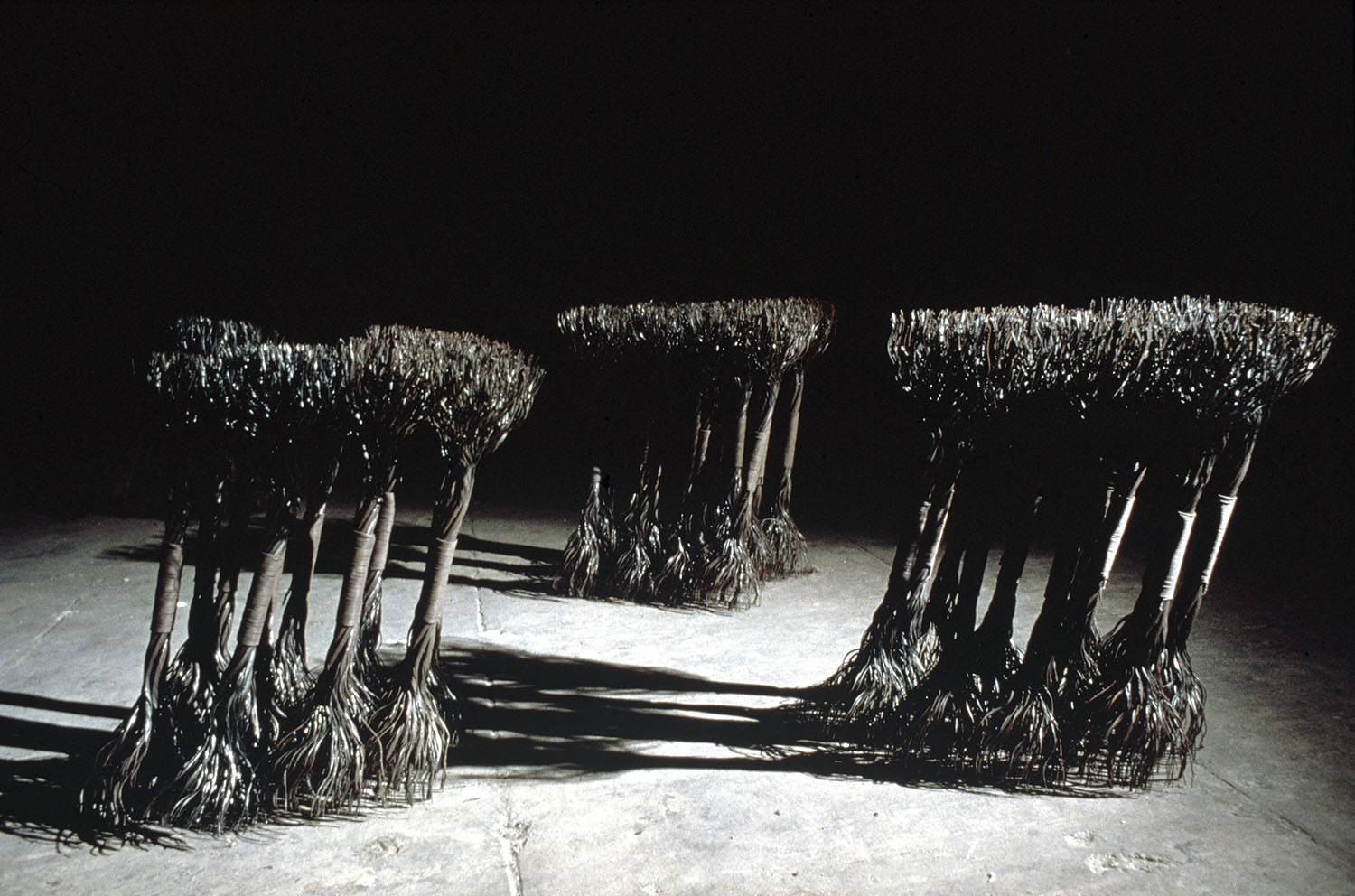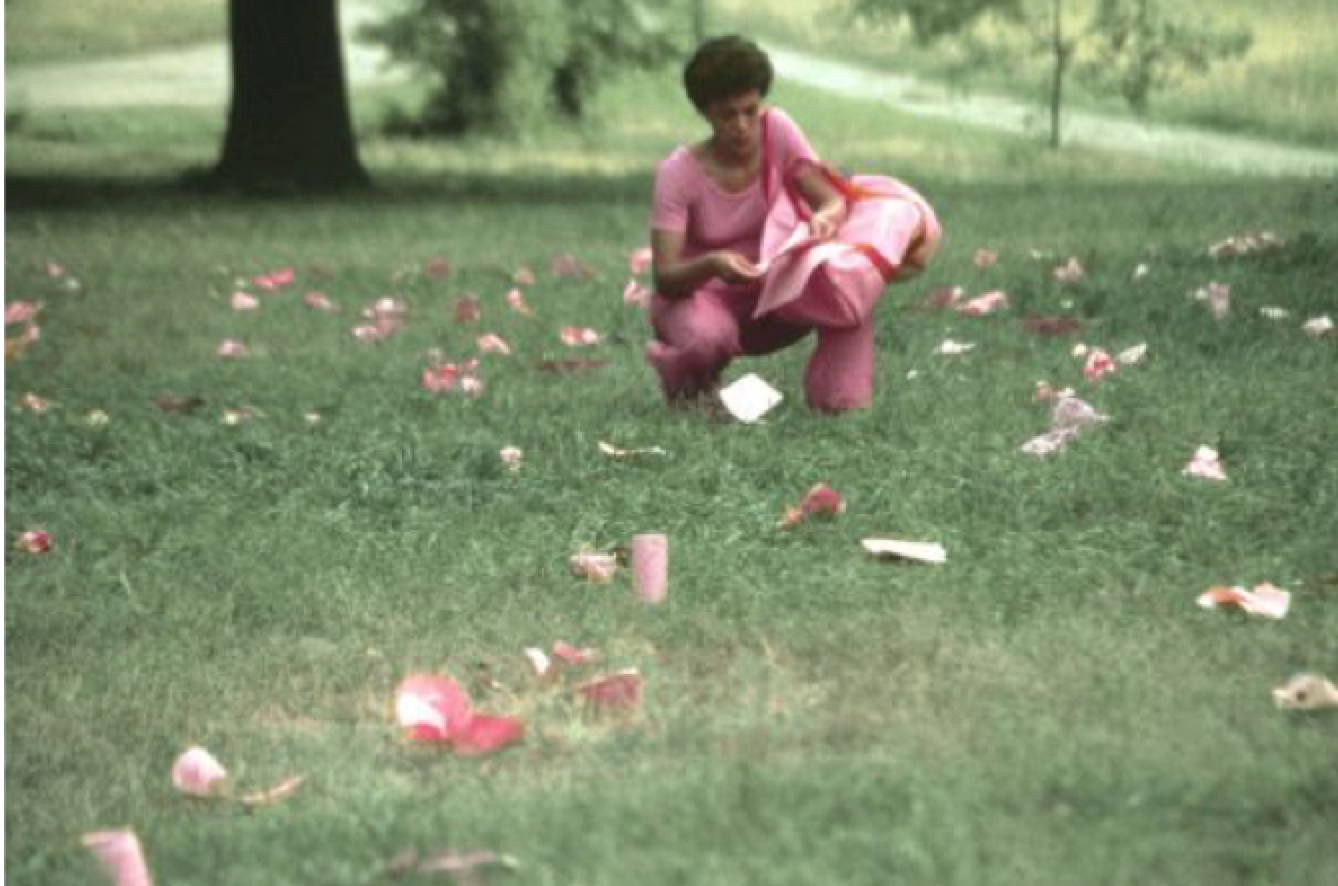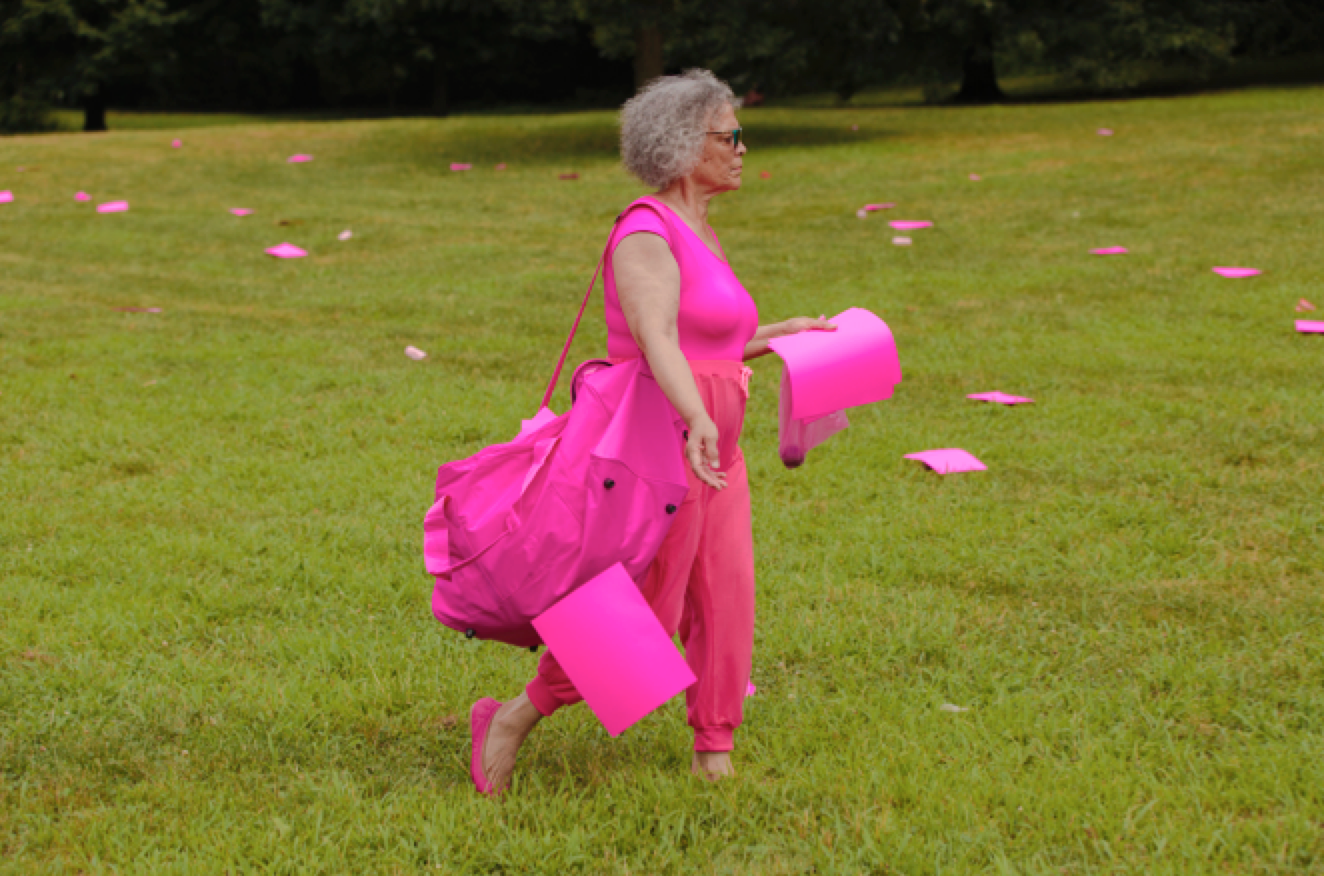A Conversation with Maren Hassinger by Catrell Thomas
“There are opportunities for sculpture everywhere. In a field, in a room, on a stage, in the street, on the ceiling, in front of a camera, etc. Every place inspires a different response. Some responses locate us in space and time and link us to particular people in particular places. These last offerings might be political. There are reactions to given events….. There are sculptures acting like sculptures and people acting like people and sculptures acting like people and people acting like sculptures. There’s stillness and motion. There’s the “littering” of space to mark it. There are pieces that last and pieces that erode. Materials are many—steel to video, plastic bags to newspapers.” – Maren Hassinger
For the last four decades, Maren Hassinger has captivated audience with impermeable creativity and style. Consciously curating a world where she’s able to make powerfully moving statements, the sculptor and performance artist has been, and still is, a powerful force of nature, featured recently in We Wanted a Revolution: Black Radical Women 1965-85, formerly at the Brooklyn Museum and currently at the California African American Museum (CAAM) through January, 2018, and then at The Institute for Contemporary Art (ICA), Boston.
 Maren Hassinger with her sculpture at ARCO Center for Visual Art, Los Angeles, 1976
Maren Hassinger with her sculpture at ARCO Center for Visual Art, Los Angeles, 1976
Professionally trained as a dancer, Hassinger’s craft is evident in her sculptural forms and performances. Thread-like metal string and twine are often twisted and frayed, giving them an organic movement and shape that mimics fiber and other natural elements. Her 1977 performance with artistic partner Senga Nengudi’s nylon sculpture highlighted and incorporated her love of dance and natural movement precisely, allowing her to explore the relationship between the body and its surroundings.

A Los Angeles native, Hassinger began her career in the SoCal art scene of the 70’s. Her body of work is a remarkable catalog of stories, protest, and life lessons that are full of substantive experience and experimental endurance. Her most recent exhibit, We Wanted a Revolution: Black Radical Women, 1965–85 at the Brooklyn Museum, presented Hassinger with an opportunity to recreate her 1982 performance, “Pink Trash.” Staged in Prospect Park 35 years later, she retraced her steps alongside a new landscape in a seemingly different city.
‘Pink Trash.’ Original 1982 and 2017 Re-Performance for the Brooklyn Museum in Prospect Park on Saturday, July 23, 2017.
The bag was a lot heavier this time, she says, and, more importantly, there was an audience. Feeling time more acutely, the process of the performance needed to be improvised and Hassinger’s instinct to rely on art theory considerations proved wise.
“I varied my movements and changed the ending which included asking the audience to help return the site to its pristine beginnings. I told them they could keep what they picked up as a souvenir. And some did. The only piece of trash I picked up before beginning was an organic plum! Doing this in 1982 I had SO MUCH garbage (multiple bags) to pick up before “applying” the pink stuff.”

For Hassinger, whether revisiting a past performance like “Pink Trash” or “R.S.V.P.,” or pushing new sounds and visuals, there isn’t a specific moment in time where she felt she was more or less impactful than she was before. Each piece or performance has been just as relevant, and that is what’s most meaningful to her.
“The theory guides the practice,” she says. “Artists are conduits for knowledge, feelings, and truths by employing visual ideas as language that can communicate ideas. I’m sorry that I cannot pinpoint a particular performance or piece which was the most impactful in terms of my narrator presence. I make the work and then I’m finished making it. When I look back I see what I was trying to do, but I can’t say which one was the best or better than others. I guess it’s kind of like asking a writer which of your works is the best read? Works are all part of the practice of discovery. I think you, as an audience, might have an easier time identifying the best tries. I can’t. It’s like one, really long, run-on sentence for me.”
On being an artist/activist and understanding the roles we must take to make the world a bit more habitable, Hassinger remains hopeful and inspired to keep moving forward. Navigating through life’s trials, tribulations, and the appearance of progress in an unstable social and political climate doesn’t come without its challenges–choosing to be a light in this vast darkness is always the answer.
 “Fight the Power” in at the Columbia University Triennial
“Fight the Power” in at the Columbia University Triennial
“I think the work of artists is to talk about the world as they know it and to share that voice making a contribution to human support,” she says. “My hope is that our combined voices will prevail and that we can continue to do our jobs carrying culture. My advice to artists in this politically tumultuous time is, Don’t stop!”
Since 1997, Hassinger has played another important role as Teacher and Director of the Rinehart School of Sculpture at the Maryland Institute College of Art (MICA). Teaching has taught her that her students know as much as she does. Her job, she says, is to “engage them in conversations about what they can contribute to the field.”
And that’s just what she does. She prides herself on sharing her strategies for empowerment and encourages a new generation of passionate makers and thinkers to be the change that we need today and in the future. In addition to teaching, there are many exhibitions on the horizon for the artist and Hassinger isn’t slowing down anytime soon.
“I hope to survive for the remainder of my time here making art and sharing those ideas with people who, like you, are interested,” she says.

Top Image: “Leaning.” Currently traveling to: Brooklyn Museum, New York, The California African American Museum (CAAM), Los Angeles, and The Institute for Contemporary Art (ICA), Boston
Photos courtesy of the artist.
We Wanted a Revolution: Black Radical Women, 1965–85 was on exhibit at The Brooklyn Museum from April 21 – September 17, 2017, at CAAM through January 18, 2018, and ICA Boston from June 27 to September 30, 2018.








